Tools Required
J 24548 Piston Seal Installer
Disassembly Procedure
- Remove the fluid from the caliper.
- Remove the brake pad. Clean the interior of the caliper with clean shop towels.
- Remove the piston.
- Direct the compressed air into the caliper fluid inlet.
- Remove the boot.
- Remove the piston seal with a nonmetal tool.
- Remove the bleeder valve.
- Clean the bleeder valve, the caliper bore, the caliper passages, and the piston with denatured alcohol. Use dry, filtered, compressed air to dry the parts and to blow out the passages.
- Replace any piston which is scored, corroded, or contains damage to the chrome plating.
- Replace any caliper bore which is scored, pitted, or corroded. Attempt to polish off any light corrosion with a crocus cloth.
Caution: Do not place your fingers in front of the piston in an attempt to catch or protect it when applying compressed air. This could result in serious injury.
Notice: Use only enough air to ease the piston out of the bore. If the piston is blown out, even with the padding, it can be damaged.
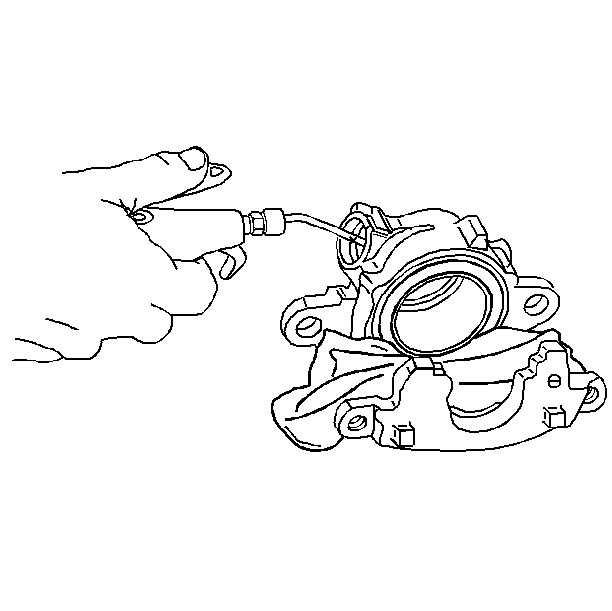
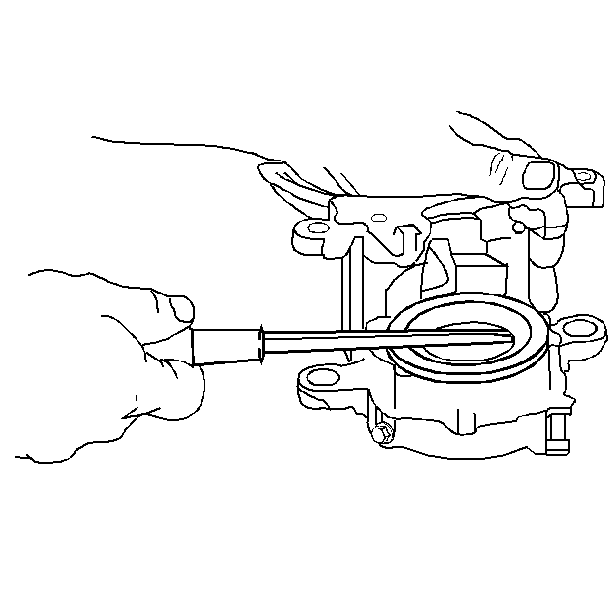
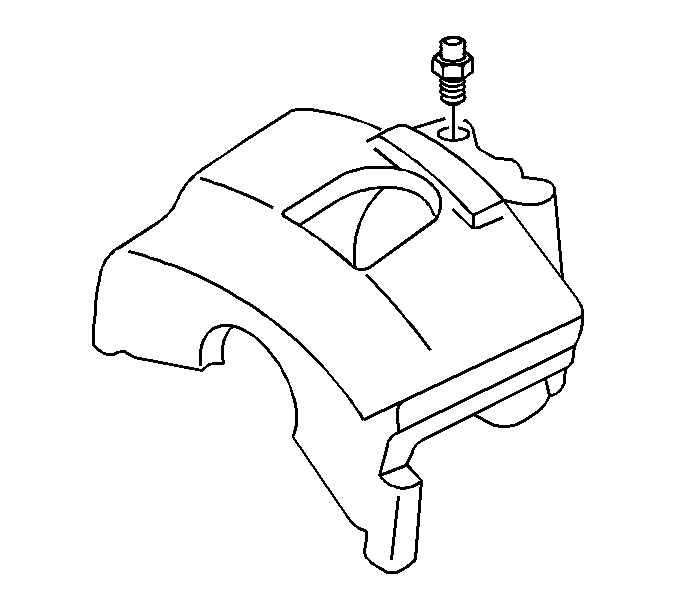
Assembly Procedure
- Lubricate the new piston seal, the caliper bore, the piston and the seal lips on the boot with clean brake fluid.
- Install the piston seal being careful not to twist the seal in the caliper bore.
- Install the boot on J 24548 .
- Install the boot in the caliper bore groove. The lip of the boot must firmly sit in the groove.
- Install the piston inside J 24548 .
- Install the piston halfway into the bore.
- Remove J 24548 . Make sure that the boot is sitting firmly in the groove.
- Install the bleeder valve.
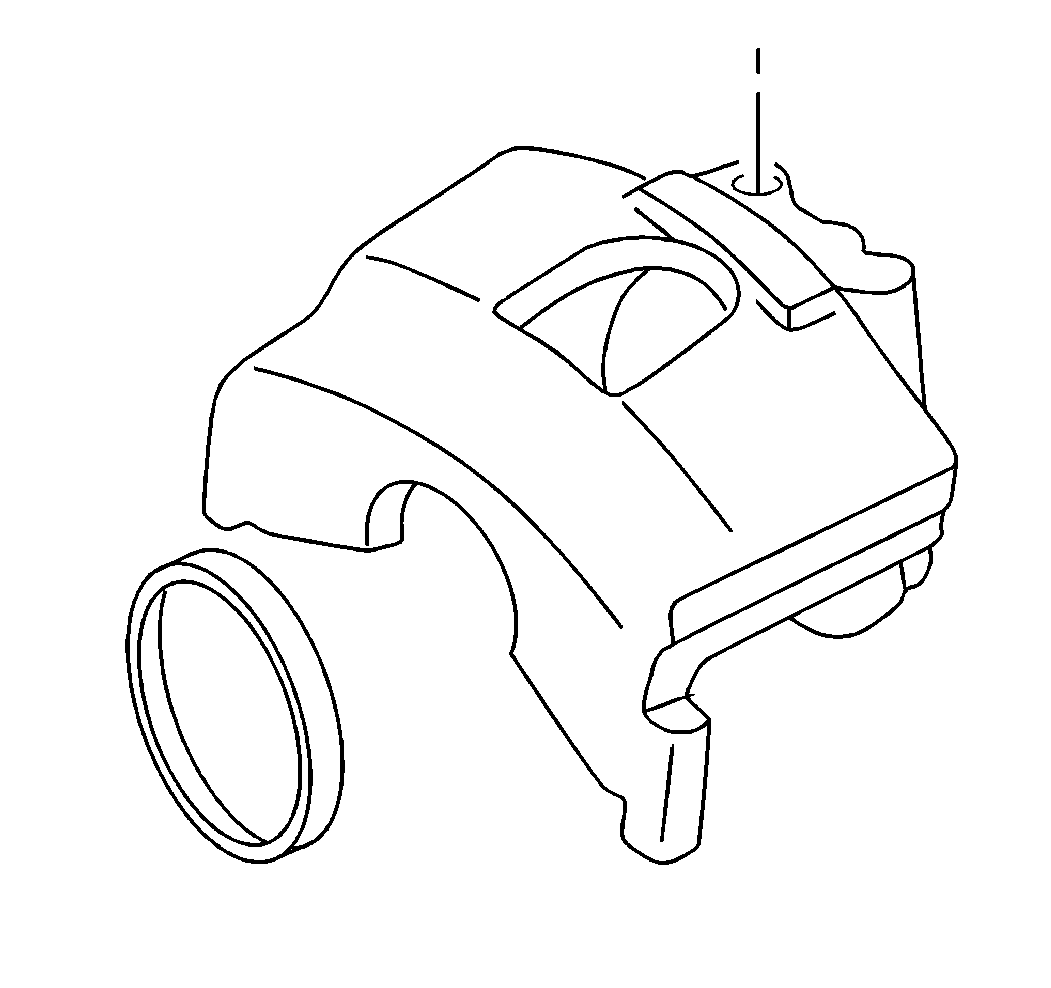

| 3.1. | Place the large diameter of the boot over the tool, then carefully work the smaller diameter onto the tool. |
| 3.2. | Slide the large diameter of the boot off the tool. |
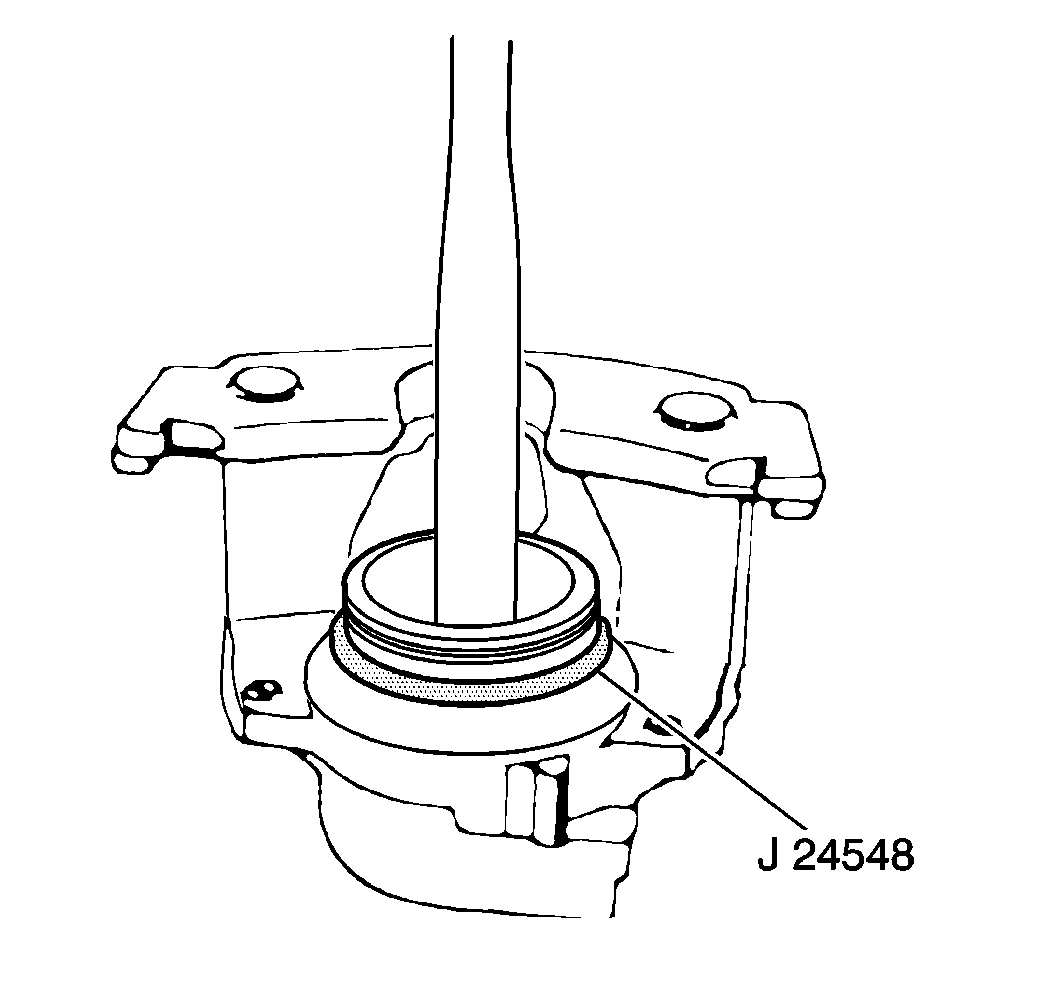

Notice: Use the correct fastener in the correct location. Replacement fasteners must be the correct part number for that application. Fasteners requiring replacement or fasteners requiring the use of thread locking compound or sealant are identified in the service procedure. Do not use paints, lubricants, or corrosion inhibitors on fasteners or fastener joint surfaces unless specified. These coatings affect fastener torque and joint clamping force and may damage the fastener. Use the correct tightening sequence and specifications when installing fasteners in order to avoid damage to parts and systems.
Tighten
Tighten the bleeder valve to 13 N·m (110 lb in).
